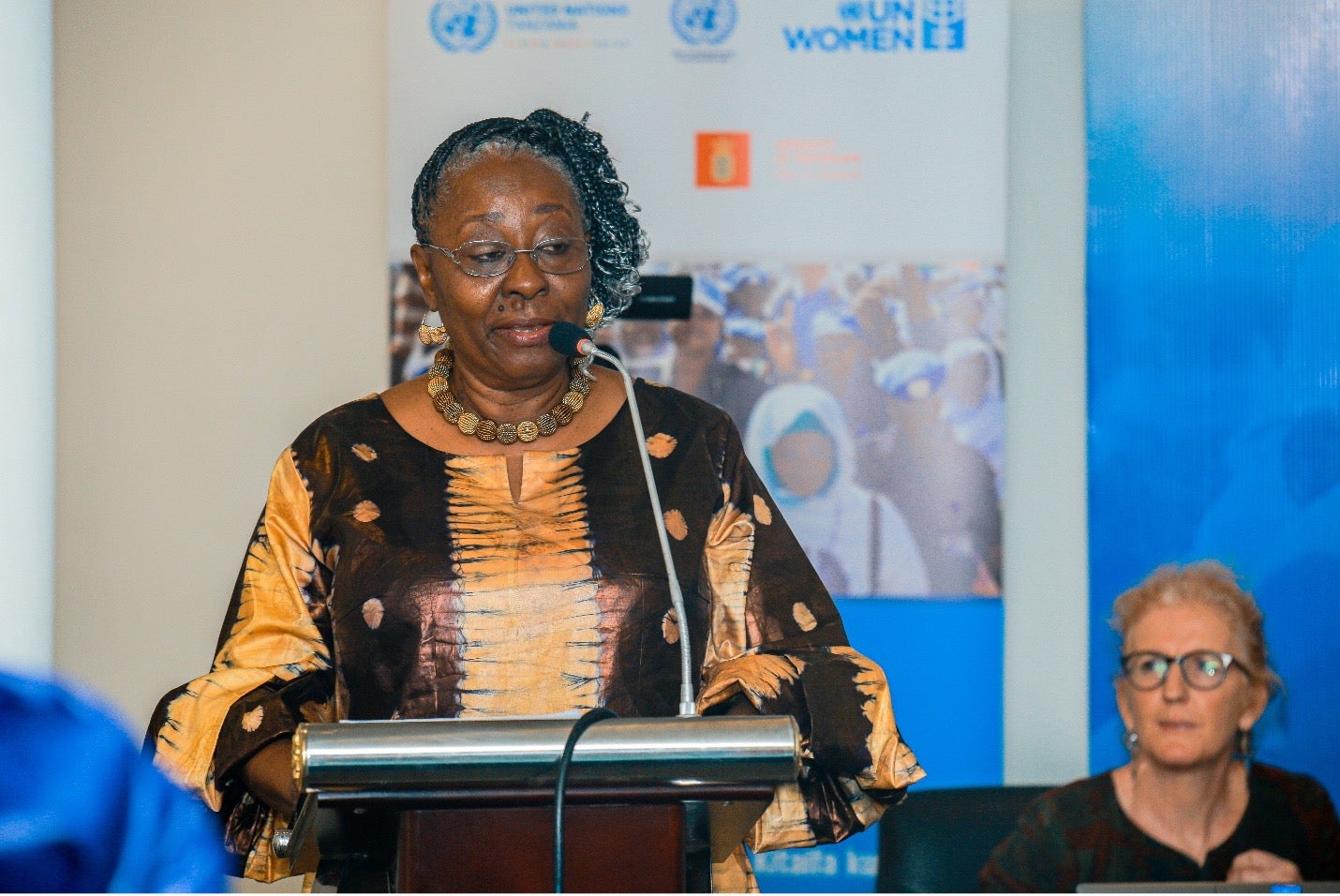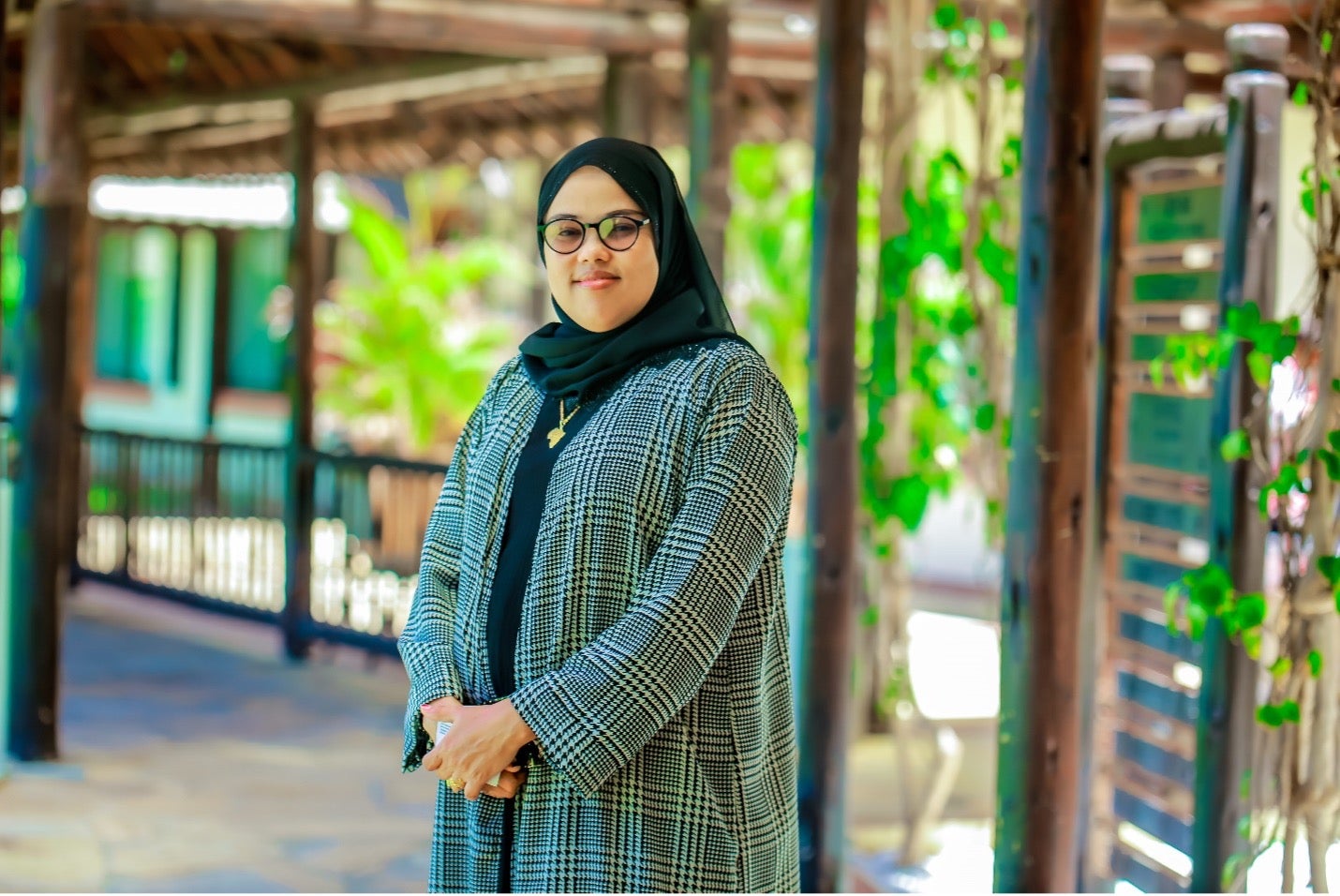Involving women in peace and security: Good practices in the implementation of 1325 National Action Plans in East and Southern Africa
Date:
Tanzania has embarked on the exciting journey of developing its first National Action Plan (NAP) on Women, Peace and Security (WPS) and will soon be entering the drafting phase. In East and Southern Africa, Tanzania is among the few countries that will be developing its first-ever plan inviting women to meaningfully participate in the peace process. Many countries in the region have developed NAPs with some successfully implementing theirs, gathering many years of lessons learned and diverse practices. The 2022 International Peace Day presented a unique opportunity to bring together professionals from East and Southern African countries, the Tanzanian government and civil society representatives to share lessons learned and best practices in NAP development, implementation, and reporting.Tanzania has embarked on the exciting journey of developing its first National Action Plan (NAP) on Women, Peace and Security (WPS) and will soon be entering the drafting phase. In East and Southern Africa, Tanzania is among the few countries that will be developing its first-ever plan inviting women to meaningfully participate in the peace process. Many countries in the region have developed NAPs with some successfully implementing theirs, gathering many years of lessons learned and diverse practices. The 2022 International Peace Day presented a unique opportunity to bring together professionals from East and Southern African countries, the Tanzanian government and civil society representatives to share lessons learned and best practices in NAP development, implementation, and reporting.

War, conflicts, terrorism and violent extremism have distinct and devastating consequences on women and girls. Women experience firsthand the impact that conflict, increased militarization and violent extremism have on the communities, their families, and their own bodies. They are also working to prevent conflict and extremism, working as activists, judges, and government officials. Yet, despite this, women remain largely invisible and excluded from peace processes and negotiations.
The involvement of women in peace building is a right owed to women not only because of the disproportionate impact of conflict on their own lives, but also because of the enhanced prospect of conflict resolution and sustainable peace. As peacekeepers, mediators, negotiators and political leaders, women are agents of social change and sustainable peace.
Recognizing women’s critical role in sustaining peace, United Nations Security Council Resolution 1325 on Women, Peace and Security (UNSCR 1325) was unanimously adopted in 2000, marking a global recognition of the impact of conflict on women and their vital role in peace building. It emphasizes the important role women play in preventing and resolving conflicts as well as in post-conflict reconstruction. It also stresses the importance of women’s equal participation in all matters of peace and security and special measures to protect women and girls from all forms of violence.
NAPs provide a valuable tool for states to implement their commitments to the WPS agenda and for civil society to hold them accountable. An Action Plan is a critical and practical document that details the actions a government takes to translate its WPS commitments into concrete policies and programmes to enhance women’s participation in peace, security and reconstruction efforts.
As of September 2021, NAPs have been developed by a total of 98 countries. Within the East and Southern Africa region, Uganda and Burundi are on their third generation of NAP, while Kenya and Rwanda are on their second. Angola, Djibouti, Malawi, Mozambique, Namibia, South Africa, South Sudan, Sudan, and Somalia are on their first generation of NAP, while Zimbabwe and Tanzania are in the process of developing their-first.

“In the last 20 years, UN Women, with the support of its partners, has employed various strategies to implement UNSCR 1325. We provided Gender Advisers to UN facilitators of peace processes, built the capacity of women mediators and women’s peace networks to engage in peace processes, which included their consultations with grassroots communities for a bottom-up approach for inclusivity; provided technical and financial support for the development and implementation of National and Regional Action Plans on UNSCR 1325; supported the AU in the development of the AU Continental Monitoring Framework for Women, Peace and Security by facilitating the inputs of countries in the East and Southern Africa region in defining the indicators for reporting. There have been tangible results for these inputs”, said Jebbeh Forster, Women, Peace and Security Advisor, UN Women Regional Office for East and Southern Africa.
With those developments, some best practices have been identified while many challenges have been encountered and remain. Among the good practices workshop participants shared, were 1) involving all relevant stakeholders at the start of the development process, as it fosters ownership and accountability; 2) integrating women and relevant community stakeholders (such as traditional, clan and religious leaders), youth groups, and the private sector to ensure that their views and needs are considered and reflected in the NAPs; 3) establishment of networks on WPS and the identification of WPS Champions, as well as forming steering committees to assist development and implementation of NAPs; 4) integrating the NAPs into the national and district government development and budgetary plans; 5) the localization of NAPs; 6) the development of training materials and manuals on NAP development and implementation, and; 7) strengthening Monitoring and Evaluation Frameworks.

Below we present good practices shared by countries in the region during the workshop:
NAP development
Somalia’s first NAP was launched in September 2022, being the 99th country in the world with a NAP on women peace and security, the development process was fully supported by UN Women.
Consultations started in early 2019: line ministries, CSOs, Somali Women’s Charter champions, youth/women-led organizations, traditional and religious leaders, donors and UN agencies were consulted at the federal and state levels. After the first draft, the NAP was validated, and the M&E frameworks and costing were finalized.

“Some of the achievements include localization of the NAPs – now all states have their own NAP, engaging various stakeholders - CSO leaders, and academics in the consultations,” said Sadia Mohammed Nur, Director of the Gender, Ministry of Women’s and Human Rights of Somalia. She also adds that what helped was that the NAP was translated into the Somali language for dissemination, a “NAP 1325 friend group” was established, quarterly meetings take place with women’s networks and forums at the community-level to discuss issues relevant to peacebuilding, and peace and security at the district level.
NAP implementation
Mozambique had a long development process for the NAP 2018-2022. The development process was led by the Ministry of Gender and included a wide range of stakeholders, such as the National Council of the Advancement of Women, the government, CSOs, the private sector, academia, the media, UN and bilateral partners.
The NAP includes a M&E strategy with clear roles for the government and civil society, guidance on implementation, and an implementation matrix with objectives, expected results, deadlines and costing.
Some achievements include, capacity building and service delivery; increasing WPS cross sector engagement in uniformed forces, academia, CSOs etc.; awareness raising of GEWE; mobilizing and capacity building for CSOs; improved NAP coordination and the creation of a WPS unit within the Ministry to help with facilitating the operationalization, and the development of knowledge products.
“As lessons learned, we would like to encourage other countries to involve women who have been affected by conflict in WPS awareness raising and capacity building, to engage the security and defense sector within the WPS agenda; to reinforce ownership of the NAP by the government to ensure implementation; and have a budget for the activities,” said Dr.Sansao Buque, Deputy National Director for Gender, Ministry of Gender, Children and Social Action, Mozambique.
Robust Architecture and M&E Framework
Tracking progress on highly complex contexts is challenging and it is crucial that a robust architecture for monitoring and evaluation of the NAP is developed that aids the smooth implementation and reporting of results. When embarking on developing Uganda’s 3rd NAP an analysis of the key WPS issues in Uganda was conducted through regional and target group consultations with over 500 stakeholders across all regions of Uganda. This analysis was used to frame the four NAP outcomes, including mid-term outcomes and outputs.
The next step was to map the national frameworks such as the National Development Plan and the national SDG indicators, to pull out the existing indicators and targets related to the outcomes of the NAP, extracting them, placing them alongside the NAP outcomes, and aligning the NAP with existing plans, making the NAP realistic and achievable.
NAP III has been designed to achieve high impact, emphasizing results. Operational plans were designed specifying the interventions. These operational plans are the primary implementation modality of NAP III. Over 10 ministries, departments and agencies have developed operational plans, which are 1–2-page documents highlighting the budget/resources allocated to the NAP. This enables the identification of resources for implementation.
The M&E working group is made up of Focal points from stakeholders that meet every year to gather and share their reports with the secretariat at the Ministry of Gender, Labour and Social Development. Each year a report is developed, validated, and presented to the government and donors.
These three elements ensure the NAP is on track to achieve its’ results. In 2022, the first Annual Report was developed, and Uganda was one of the only countries in the region to report to the African Union’s Continental Framework.
Financing NAPs
Many NAPs in the region are not costed and there are challenges in collecting data. Without the necessary data and monitoring, implementation is challenging.
For Uganda’s NAP III budget to be achieved it needs to be realistic and achievable within the timeframe of the NAP III. Uganda began this process by going through the M&E plan and finding the figures for each indicator in existing plans and programmes to estimate the cost of each outcome/output and activity. A pooled fund was set up to coordinate financial resources for the NAP.

In Uganda, like many countries in the region, there is a gender equity budgeting tool whereby every government budget is passed through a checklist and must reach a certain threshold before it can be approved for funding. The Ministry of Gender is working with the Ministry of Finance and the Equal Opportunity Commission to include NAP indicators and targets. This will better enable tracking government funding for the NAP. This is also done at the local level through Local Action Plans (LAPs). The 3rd NAP has a goal of developing and implementing LAPs in 50 districts across key WPS hotspot in Uganda. To date, 12 districts have developed LAPs and in 50 per cent of these have allocated at least 1 per cent of their budgets to the implementation of these LAPs. This goes to show the strong political will and commitment for implementation of 3rd NAP in Uganda at the national and local level.
“The two high impact elements of M&E and costing are critical for successful implementation and go hand in hand, you cannot have one without the other and they must be created at the design and development stage of the NAP. Most NAPs fall short in the implementation stage, but by putting in the work at the start to get the NAP infrastructure right, you set the NAP up for successful implementation later,” said Claire Hawkins, Women, Peace and Security Specialist, UN Women Uganda.